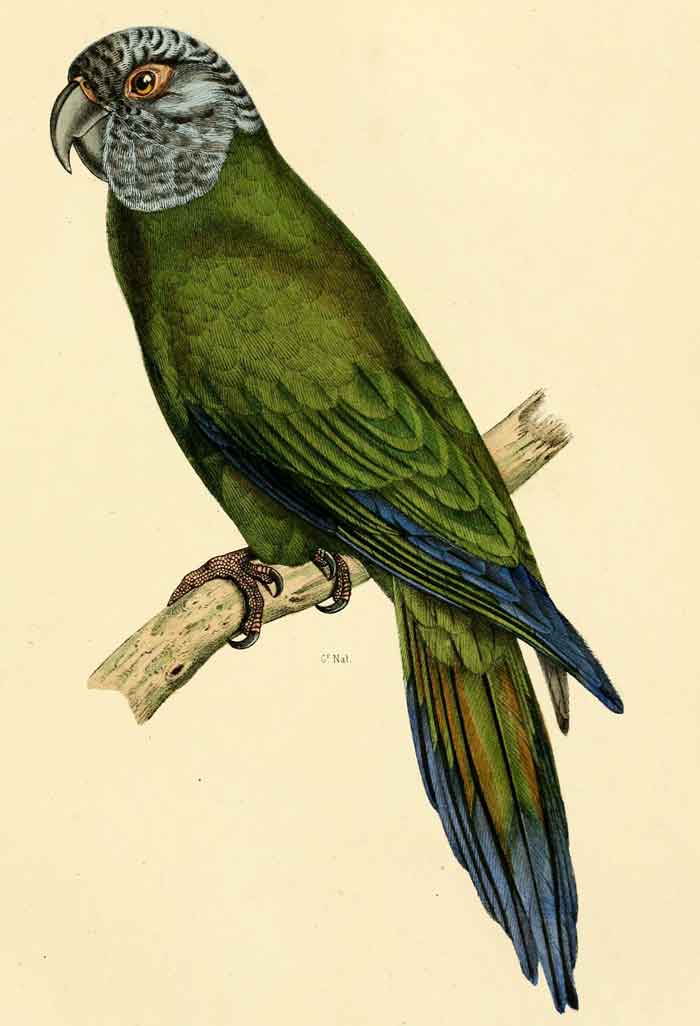
Aratinga weddellii
Superregnum: Eukaryota
Cladus: Unikonta
Cladus: Opisthokonta
Cladus: Holozoa
Regnum: Animalia
Subregnum: Eumetazoa
Cladus: Bilateria
Cladus: Nephrozoa
Superphylum: Deuterostomia
Phylum: Chordata
Subphylum: Vertebrata
Infraphylum: Gnathostomata
Megaclassis: Osteichthyes
Cladus: Sarcopterygii
Cladus: Rhipidistia
Cladus: Tetrapodomorpha
Cladus: Eotetrapodiformes
Cladus: Elpistostegalia
Superclassis: Tetrapoda
Cladus: Reptiliomorpha
Cladus: Amniota
Classis: Reptilia
Cladus: Eureptilia
Cladus: Romeriida
Subclassis: Diapsida
Cladus: Sauria
Infraclassis: Archosauromorpha
Cladus: Crurotarsi
Divisio: Archosauria
Cladus: Avemetatarsalia
Cladus: Ornithodira
Subtaxon: Dinosauromorpha
Cladus: Dinosauriformes
Cladus: Dracohors
Cladus: Dinosauria
Ordo: Saurischia
Cladus: Eusaurischia
Subordo: Theropoda
Cladus: Neotheropoda
Cladus: Averostra
Cladus: Tetanurae
Cladus: Avetheropoda
Cladus: Coelurosauria
Cladus: Tyrannoraptora
Cladus: Maniraptoromorpha
Cladus: Maniraptoriformes
Cladus: Maniraptora
Cladus: Pennaraptora
Cladus: Paraves
Cladus: Eumaniraptora
Cladus: Avialae
Infraclassis: Aves
Cladus: Avebrevicauda
Cladus: Pygostylia
Cladus: Ornithothoraces
Cladus: Ornithuromorpha
Cladus: Carinatae
Parvclassis: Neornithes
Cohors: Neognathae
Cladus: Neoaves
Cladus: Telluraves
Cladus: Australaves
Ordo: Psittaciformes
Familia: Psittacidae
Subfamilia: Arinae
Tribus: Arini
Genus: Aratinga
Species: Aratinga weddellii
Name
Aratinga weddellii (Deville, 1851)
Type locality: "du village de Pebas, sur Haut-Amazone"
Synonyms
Conurus weddellii (protonym)
References
Deville, É. 1851. Note sur quatre espèces nouvelles d'oiseaux provenant de l'expédition de M. Castelnau; le Cornurus Weddellii, C. jugularis, C. Luciani et Cultrides Pucheranii. Revue et Magasin de Zoologie Pure et Appliquée 2(3): 209-213 BHL Reference page. p. 209 BHL
Vernacular names
English: Dusky-headed Parakeet
español: Aratinga cabecifusca
suomi: Harmaapääaratti
português do Brasil: periquito-de-cabeça-suja
português: Jandaia-de-cabeça-azulada
The dusky-headed parakeet (Aratinga weddellii), also known as Weddell's conure or dusky-headed conure in aviculture, is a small green Neotropical parrot with dusty grey head found in wooded habitats in the western Amazon basin of South America. Its range extends from southeastern Colombia south through eastern Ecuador, eastern Peru, and southwest Amazonian Brazil, to central Bolivia. It prefers semiopen habitats such as várzea, forest edge, and forest remnants, but can also be found in coffee plantations. It is generally common and its habitat preference makes it less vulnerable than many other Amazonian species. Consequently, it is considered to be of least concern by BirdLife International and IUCN.
This long-tailed species is generally green in color (both lutino and blue mutations are rare, but do exist in captivity) with a gray-brown head, a blue-tipped tail, and remiges that are dark gray from below, mainly blue from above. The bill is black, and it has a broad, bare, white (sometimes yellow-tinged) eye-ring. With a typical length of 25–28 cm (10–11 in) and a weight around 100 grams, it is slightly smaller than the sun conure. Many people call these conures minimacaws because they have skin near their beaks and eyes, similar to the macaw.
a group of 6 dusky-headed parakeets on top of a dead tree in eastern Ecuador
a group of 6 on top of a dead tree in eastern Ecuador
It is social, and usually found in pairs or small groups. It may even flock with different species of conures. When food is plentiful, it may form flocks of up to 100 members. It eats fruit, seeds, and flowers, and searches decaying wood for insect larvae. It also ingests mineral-rich soil, e.g., from a clay lick, as a supplement. A pair raises their offspring together, nesting in woodpecker holes in trees or arboreal termite nests.
Several dusky conures resting alongside macaws and amazons in a clay lick and Ecuador
With macaws and amazons at a clay lick in Ecuador
Consuming clay is believed to provide a mineral supplement and neutralise toxins in their diet. Their predators (along with many other neotropical parrots) include many birds of prey, monkeys, and in some cases, jaguars.
They do well in captivity.[citation needed] They are fairly easy to breed if provided with a durable nest box, and will lay up to three clutches per year.[citation needed] They are known to be quiet, compared to other conure species[citation needed], but still very energetic and clownish, like most conures. These conures' lifespans range from 25 to 50 years, though their typical lifespans are usually 35–40 years. [citation needed]
Recently, they have been sighted as a colony in the coastal districts of Lima, Perú. They probably came as pets, and have settled in this city.
References
BirdLife International (2016). "Aratinga weddellii". IUCN Red List of Threatened Species. 2016: e.T22685732A93084376. doi:10.2305/IUCN.UK.2016-3.RLTS.T22685732A93084376.en. Retrieved 11 November 2021.
Deville, E. (1851). "Note sur espèces nouvelles d'oiseaux provenant de l'expédition de M. Castelnau". Revue et magasin de zoologie pure et appliquée. 2nd ser. 3 (5): 209.
Juniper, T.; Parr, M. (1998). A Guide to the Parrots of the World. East Sussex: Pica Press. ISBN 1-873403-40-2.
Retrieved from "http://en.wikipedia.org/"
All text is available under the terms of the GNU Free Documentation License

